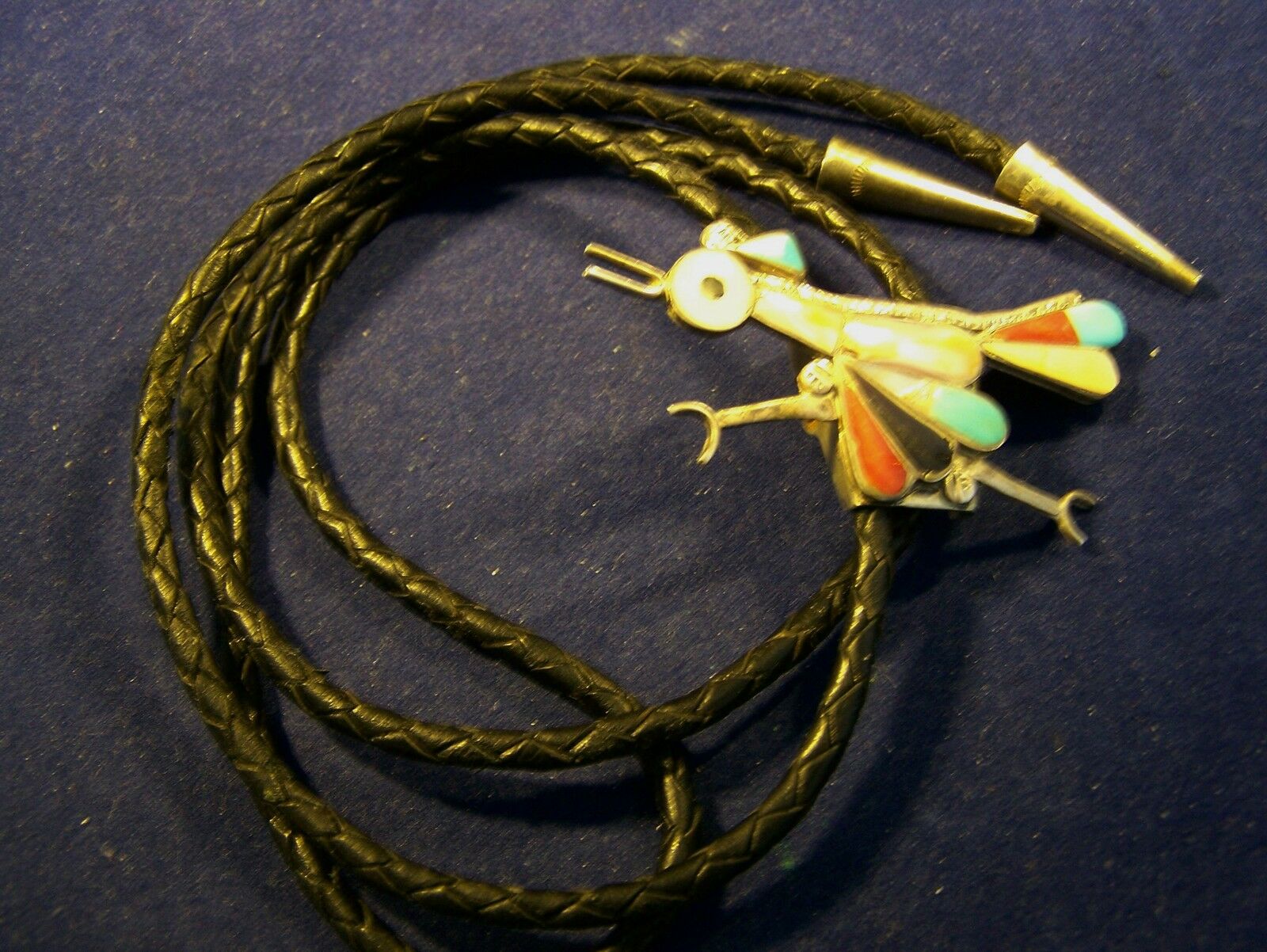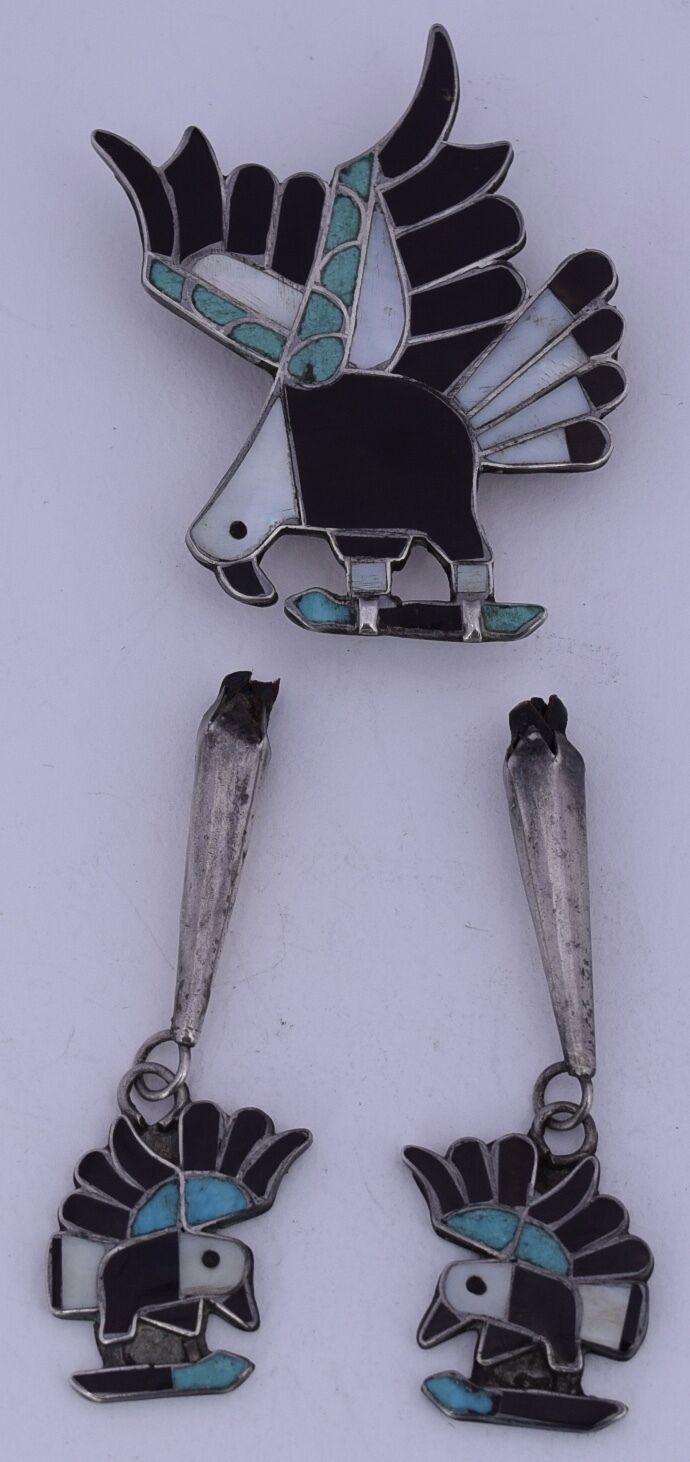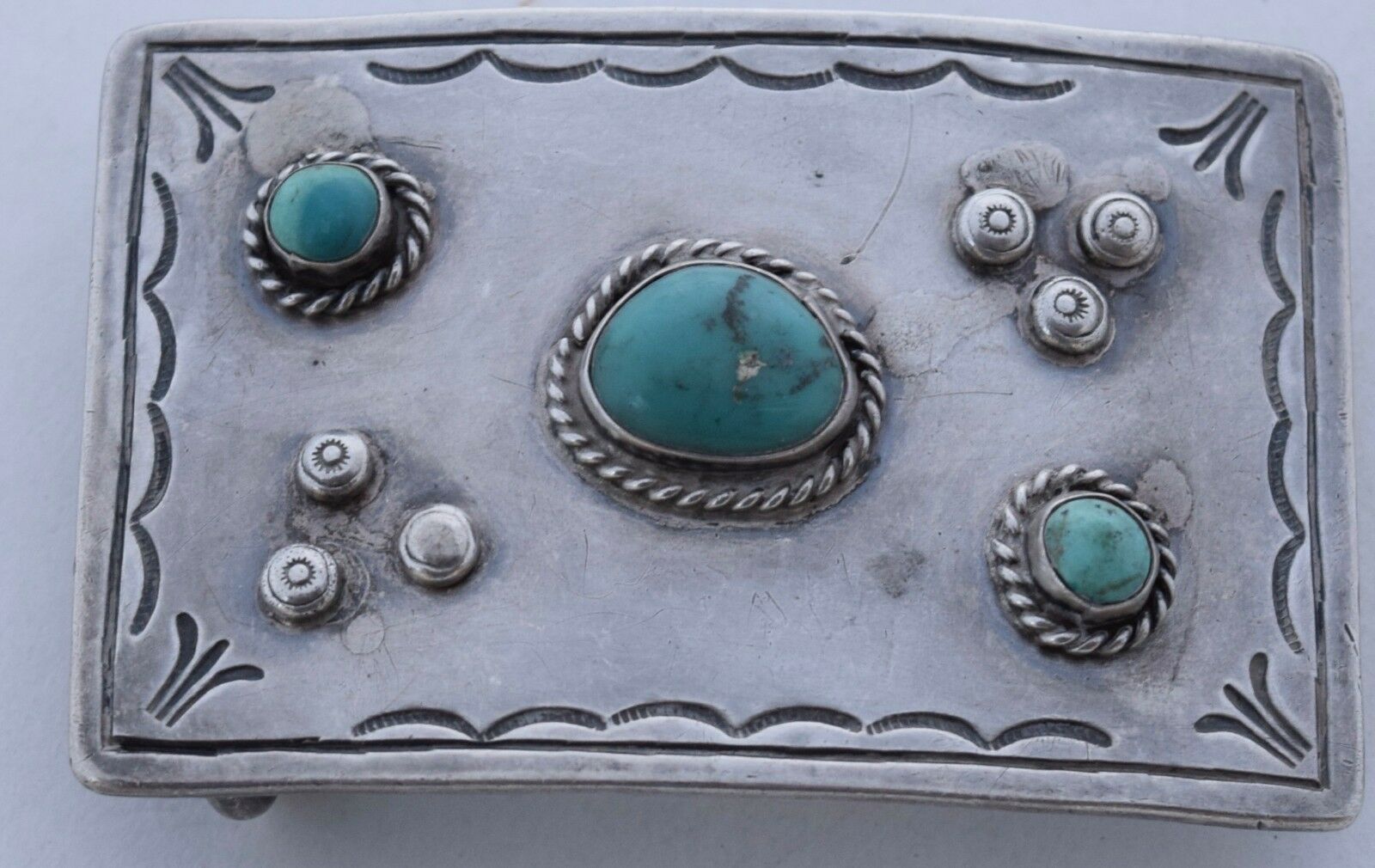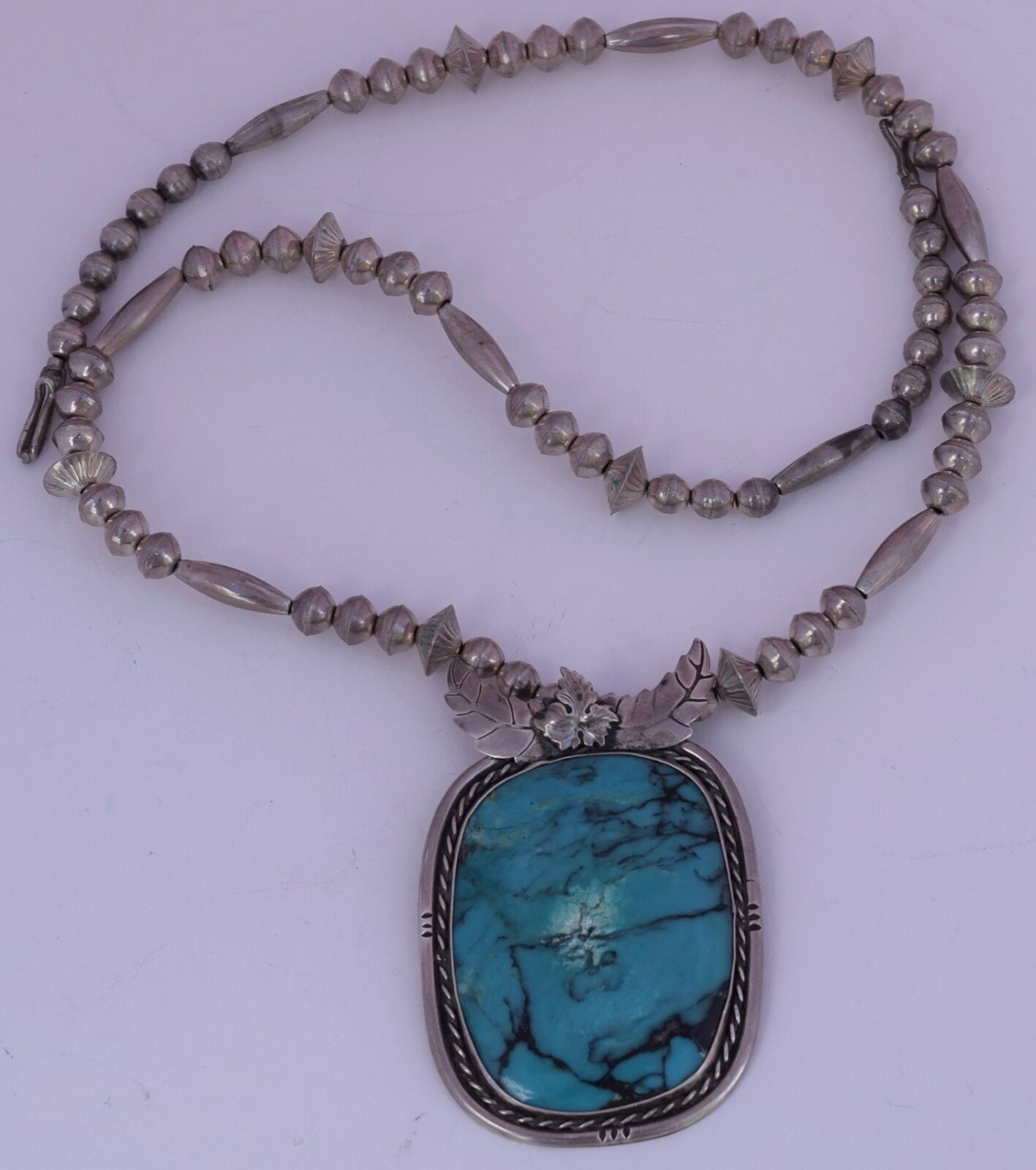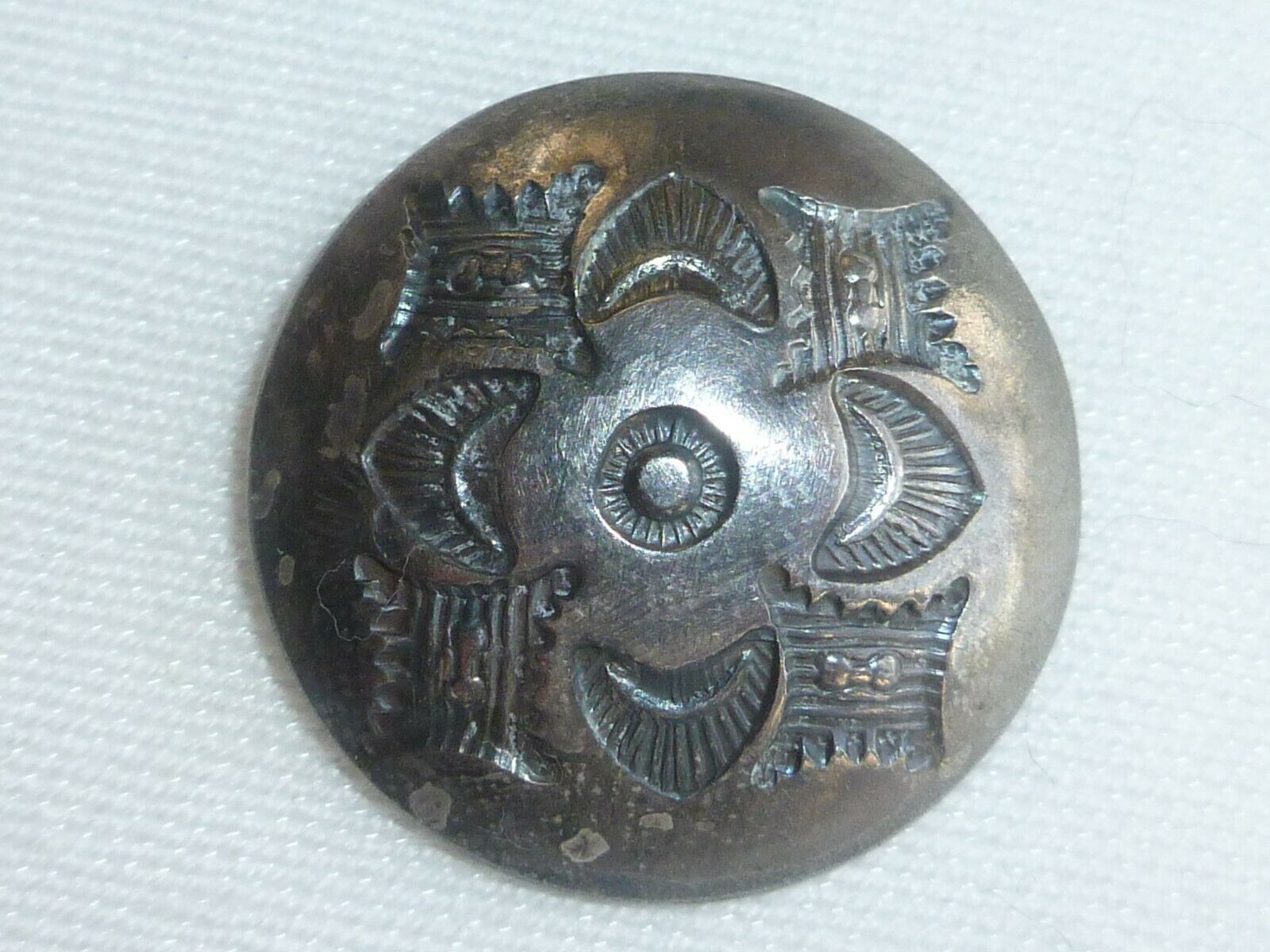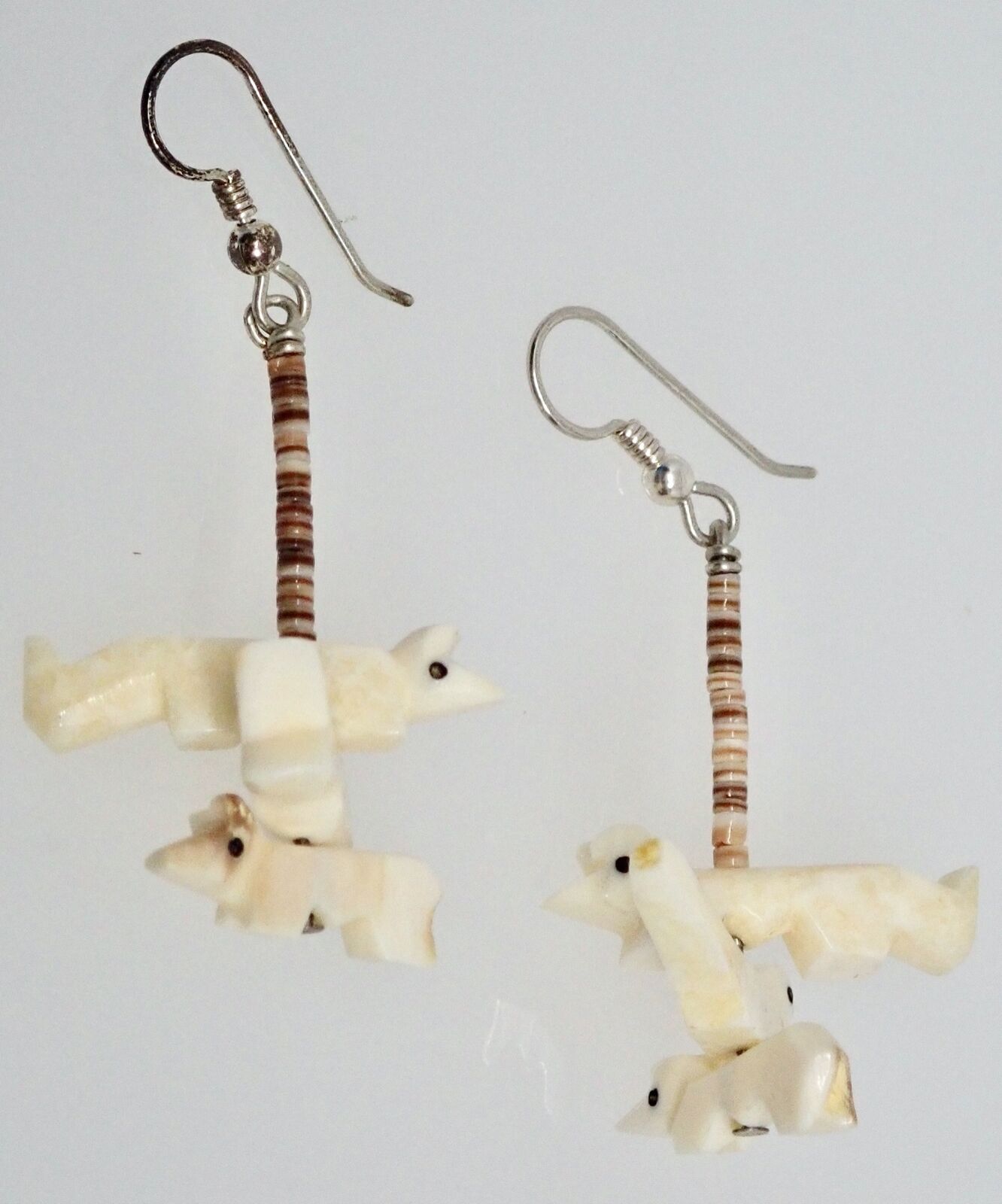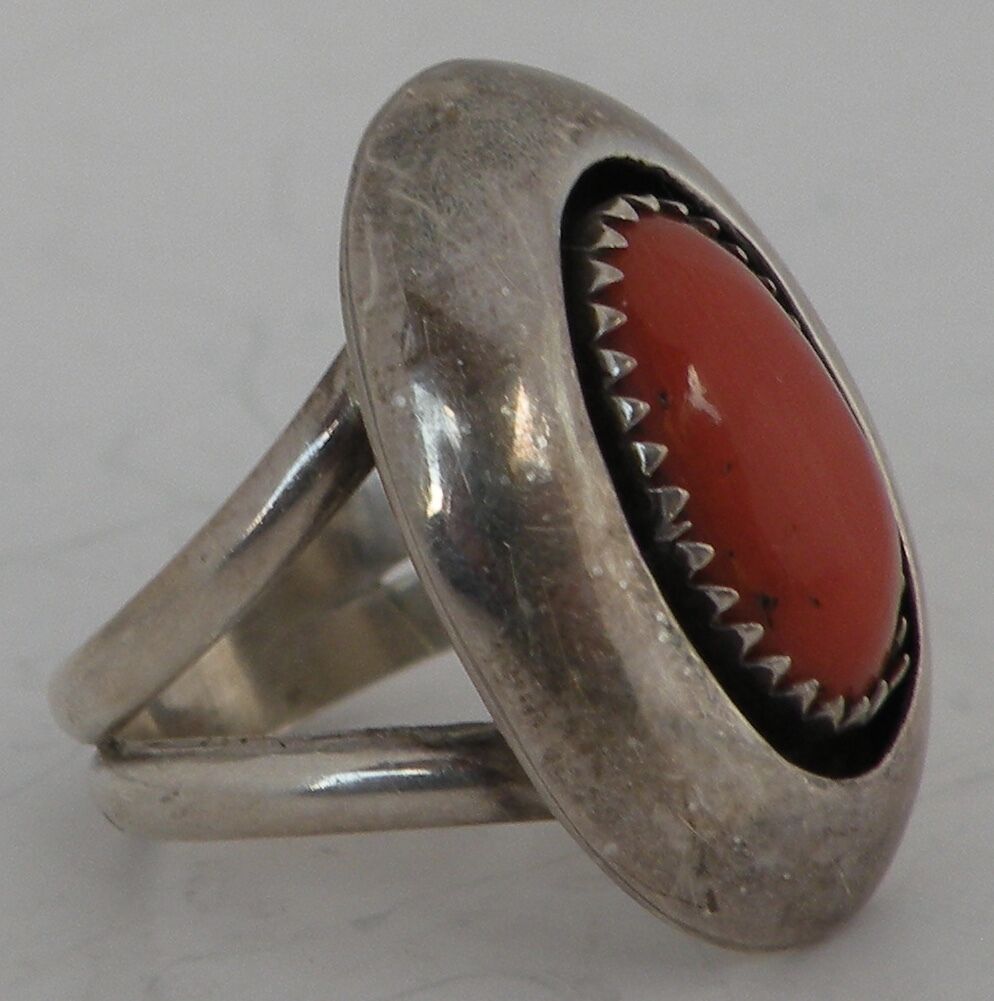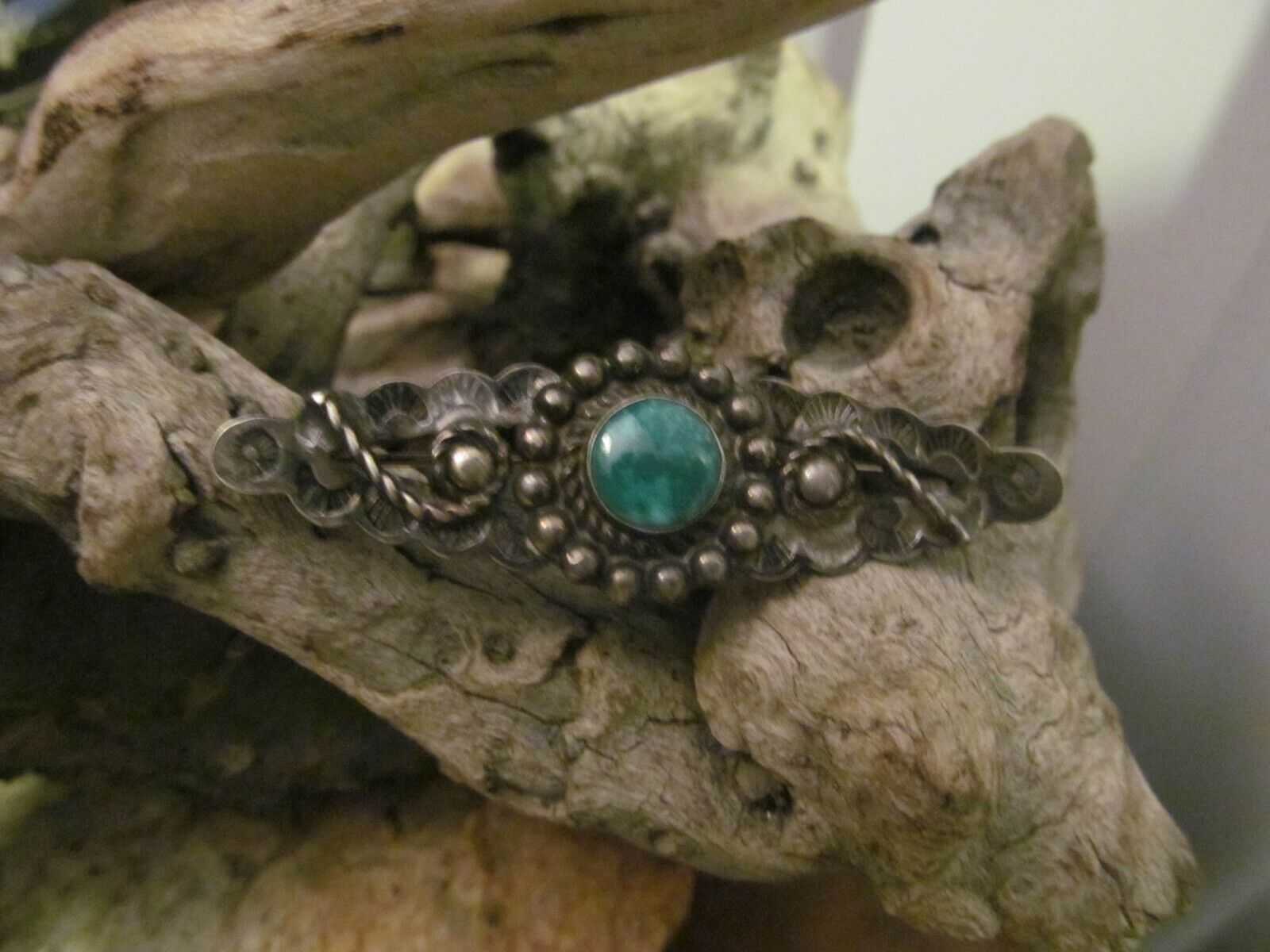-40%
1967-1983 Zuni ROADRUNNER BOLO TIE Sterling Silver Multi Stone and Shells - WOW!
$ 127.35
- Description
- Size Guide
Description
Zuni Sterling Silver Roadrunner Bolo TieBraided Black Leather Bolo Cord w/Sterling Silver Bolo Tips
Dimensions - 2.3" X .1.1"
Sterling Silver Tips .95" length - Lanyard length is 17.5" X 2 = 36"
19.7 grams = .63Troy ounces
(all measurement are approximate)
The lanyard has just been treated with a leather dressing to clean it and keep it supple.
The Zuni "Roadrunner" Bolo Tie
This wonderful Bolo Tie was made by a skilled Zuni artist between the years 1967-1983. It is not signed by the artist.
In fact most of the Native jewelry of this time (until about the early 1970's) is not. If you take the time to see what else is out there, you may be tempted to conclude that this was made by Theodore (Ted) Edaakie or his daughter Eloise. It is very similar to their known work, but I'm not comfortable or knowledgeable enough on those artists to make an attribution that it was made by either of them. My guess is that it was produced at that time and may have been made by a family member. It is guaranteed to be Sterling Silver and authentic.
The Bolo Tips are also Sterling Silver and are in good condition. I have found no defects like cracked or loose stones, noticeable scratches, etc. in the pendant and tips. The bolo pendant and tips have the warm tarnished patina of a third of a century of kind ownership.The braided black leather cord is in good condition and shows only light evidence of wear. The old "Bennett Pat. Pend.""clasp" is fine. This is what helps us date the Bolo, because these clasps were produced from 1967-1983. We have been blessed to have two or three Roadrunners run around my back yard here in Tucson chasing lizards. They love to look at their own reflections in the sliding glass doors and make a honking sound. What fun! ...I believe you will be pleased!
This amazing Bolo Tie is full of character and will be commented on by many people when you wear it. They
may compliment you and your taste in Zuni Jewelry. I also have a more expensive Roadrunner Bolo attributed to Eddie Beyuka listed for sale on Ebay...if you have an interest.
The "BOLO" Story and Myths
According to Wikipedia - Silversmith Victor Cedarstaff of Wickenburg, Arizona claims to have invented the bolo tie in the late 1940's and later patented his slide design.
According to and article in "Sunset Magazine" (April 2002) - Victor Cedarstaff was riding his horse one day and his hat blew off. Wary of losing the silver-trimmed hatband, he slipped it around his neck. His companion joked, "That is a nice-looking tie you're wearing, Vic." An idea incubated, and Cedarstaff soon fashioned the first bola tie. (the name derived from bola, "boleadora", and Argantine lariat).
It is also said that similar creation has been around since about 1886-1888 that was devised by North American pioneers. There is one on display in the Zuni community that dates from that time.
As an Arizonan, I have heard for years that the bolo tie first became popular in about 1948. At that time there was a radio station in Wickenburg, Arizona that was promoting the bolo as a fashion statement for cowboys. It caught on and was adopted by ranchers. Soon, celebrities, politicians, musicians, and the movie set were sporting them. In the early 1950's they became the official neckware fo the State of Arizona and then an international sensation in the 1980's. Partner, this is a fad from the frontier town of Wickenburg that has caught on!
Roadrunners (from Wikipedia)
"The
Hopi
and other
Pueblo
tribes believed that roadrunners were medicine birds and could protect against evil spirits. Their unusual X-shaped footprints are used as sacred symbols to ward off evil in many Pueblo tribes—partially because they invoke the protective power of the roadrunners themselves, and partially because the X shape of the tracks conceals which direction the bird is headed (thus throwing malignant spirits off track.) Stylized roadrunner tracks have been found in the rock art of ancestral Southwestern tribes like the Anasazi
. Roadrunner feathers were traditionally used to decorate Pueblo cradle boards as spiritual protection for the baby."
Thanks!
Shipping anywhere in the USA is included, insurance is also included, of course...
Recommended Reference Books
"AMERICAN INDIAN JEWELRY I" - Gregory Schaaf
"AMERICAN INDIAN JEWELRY II: A-L" - Gregory Schaaf
"HALLMARKS OF THE SOUTHWEST"- Barton Wright
"THE LITTLE BOOK OF SOUTHWESTERN SILVER" - Billie Hougart
"ZUNI JEWELRY" - Theda and Michael Bassman
***"ZUNI THE ART AND THE PEOPLE VOLUMES 1-3"- Barbara & Ed Bell
KNIFEWING AND RAINBOW MAN IN ZUNI JEWELRY" - Toshi Sei
(Inventory reference only, "b-127")


